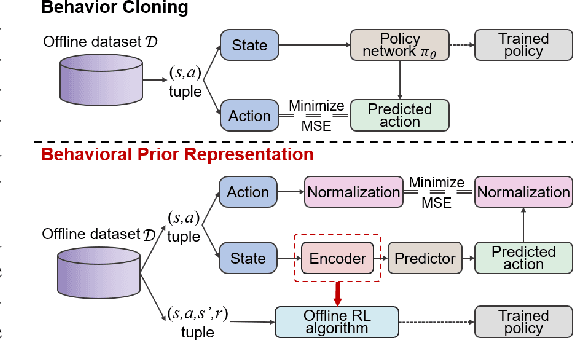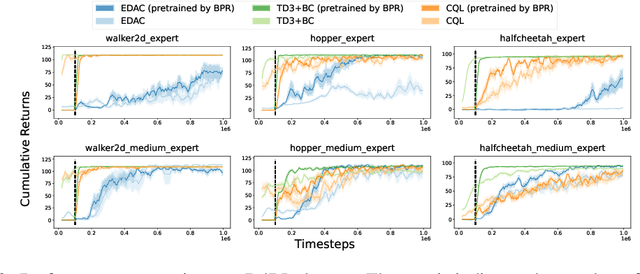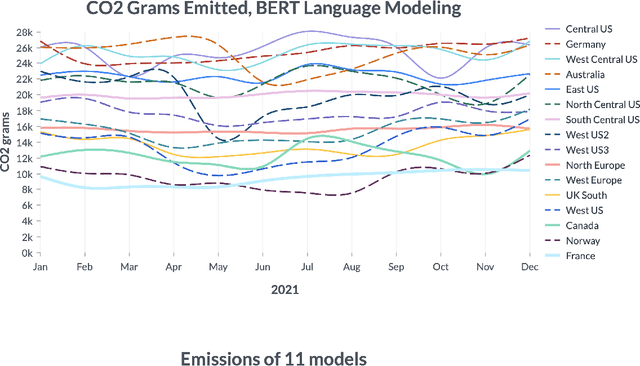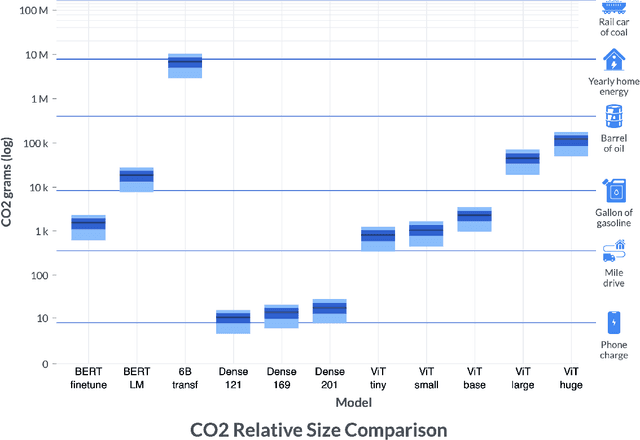Remi Tachet Des Combes
Behavior Prior Representation learning for Offline Reinforcement Learning
Nov 02, 2022



Abstract:Offline reinforcement learning (RL) struggles in environments with rich and noisy inputs, where the agent only has access to a fixed dataset without environment interactions. Past works have proposed common workarounds based on the pre-training of state representations, followed by policy training. In this work, we introduce a simple, yet effective approach for learning state representations. Our method, Behavior Prior Representation (BPR), learns state representations with an easy-to-integrate objective based on behavior cloning of the dataset: we first learn a state representation by mimicking actions from the dataset, and then train a policy on top of the fixed representation, using any off-the-shelf Offline RL algorithm. Theoretically, we prove that BPR carries out performance guarantees when integrated into algorithms that have either policy improvement guarantees (conservative algorithms) or produce lower bounds of the policy values (pessimistic algorithms). Empirically, we show that BPR combined with existing state-of-the-art Offline RL algorithms leads to significant improvements across several offline control benchmarks.
Discrete Factorial Representations as an Abstraction for Goal Conditioned Reinforcement Learning
Nov 01, 2022Abstract:Goal-conditioned reinforcement learning (RL) is a promising direction for training agents that are capable of solving multiple tasks and reach a diverse set of objectives. How to \textit{specify} and \textit{ground} these goals in such a way that we can both reliably reach goals during training as well as generalize to new goals during evaluation remains an open area of research. Defining goals in the space of noisy and high-dimensional sensory inputs poses a challenge for training goal-conditioned agents, or even for generalization to novel goals. We propose to address this by learning factorial representations of goals and processing the resulting representation via a discretization bottleneck, for coarser goal specification, through an approach we call DGRL. We show that applying a discretizing bottleneck can improve performance in goal-conditioned RL setups, by experimentally evaluating this method on tasks ranging from maze environments to complex robotic navigation and manipulation. Additionally, we prove a theorem lower-bounding the expected return on out-of-distribution goals, while still allowing for specifying goals with expressive combinatorial structure.
Measuring the Carbon Intensity of AI in Cloud Instances
Jun 10, 2022



Abstract:By providing unprecedented access to computational resources, cloud computing has enabled rapid growth in technologies such as machine learning, the computational demands of which incur a high energy cost and a commensurate carbon footprint. As a result, recent scholarship has called for better estimates of the greenhouse gas impact of AI: data scientists today do not have easy or reliable access to measurements of this information, precluding development of actionable tactics. Cloud providers presenting information about software carbon intensity to users is a fundamental stepping stone towards minimizing emissions. In this paper, we provide a framework for measuring software carbon intensity, and propose to measure operational carbon emissions by using location-based and time-specific marginal emissions data per energy unit. We provide measurements of operational software carbon intensity for a set of modern models for natural language processing and computer vision, and a wide range of model sizes, including pretraining of a 6.1 billion parameter language model. We then evaluate a suite of approaches for reducing emissions on the Microsoft Azure cloud compute platform: using cloud instances in different geographic regions, using cloud instances at different times of day, and dynamically pausing cloud instances when the marginal carbon intensity is above a certain threshold. We confirm previous results that the geographic region of the data center plays a significant role in the carbon intensity for a given cloud instance, and find that choosing an appropriate region can have the largest operational emissions reduction impact. We also show that the time of day has notable impact on operational software carbon intensity. Finally, we conclude with recommendations for how machine learning practitioners can use software carbon intensity information to reduce environmental impact.
 Add to Chrome
Add to Chrome Add to Firefox
Add to Firefox Add to Edge
Add to Edge